If you’re looking to add some heat to your garden, hot pepper seeds are the way to go. Did you know that hot peppers are not only delicious but also packed with health benefits? They contain a compound called capsaicin, which has been shown to have anti-inflammatory and pain-relieving properties. Plus, hot peppers are rich in vitamins A and C, making them a great addition to your diet.
Whether you prefer organic or heirloom varieties, hot pepper seeds offer a world of gardening excitement and culinary possibilities. From mild to super spicy, there’s a hot pepper seed for every palate. You can customize your harvest to your desired level of heat and explore the wide range of flavors that hot peppers have to offer.
In this article, I will guide you through everything you need to know about hot pepper seeds, from the best variety packs to growing tips and handling techniques. So, let’s get started and turn up the heat in your garden!
Key Takeaways:
- Hot pepper seeds are packed with health benefits, thanks to their capsaicin content.
- Hot peppers come in a variety of heat levels, from mild to super spicy.
- Organic and heirloom hot pepper seeds offer a more natural and sustainable gardening experience.
- Growing hot peppers from seeds allows you to customize your harvest and explore different flavors.
- Safety precautions should be taken when handling hot peppers to avoid skin irritation and discomfort.
The Best Hot Pepper Seeds Variety Pack
Looking to add some variety to your hot pepper collection? The best way to get started is with a variety pack of hot pepper seeds. With a variety pack, you can explore different flavors and heat levels, allowing you to find your favorites. One popular option is a variety pack that includes seeds for habanero, jalapeno, cayenne, Anaheim, Hungarian hot wax, serrano, and poblano peppers.
This pack offers a diverse selection of hot peppers, each with its own unique taste and level of spiciness. Whether you’re a fan of mild jalapenos or crave the fiery heat of habaneros, this variety pack has something for everyone. Plus, experimenting with different hot pepper varieties adds excitement and adventure to your garden.
“A variety pack of hot pepper seeds is the perfect way to explore different flavors and heat levels.” – Hot Pepper Enthusiast
You can easily purchase hot pepper seeds online, making it convenient to start your hot pepper garden. Simply browse through online seed suppliers, select the variety pack that catches your eye, and have it delivered to your doorstep. It’s never been easier to get your hands on a diverse selection of hot pepper seeds!
Hot Pepper Seeds Variety Pack
| Hot Pepper Variety | Heat Level | Flavor |
|---|---|---|
| Habanero | Super Spicy | Fruity and Floral |
| Jalapeno | Moderate | Mild and Tangy |
| Cayenne | Hot | Fiery and Pungent |
| Anaheim | Mild to Medium | Sweet and Smoky |
| Hungarian Hot Wax | Medium to Hot | Zesty and Tangy |
| Serrano | Hot | Bright and Crisp |
| Poblano | Mild | Rich and Earthy |
With the hot pepper seeds variety pack, you can grow a diverse range of hot peppers in your garden. From intense heat to mild flavors, this pack has you covered. Don’t limit yourself to just one type of hot pepper when you can enjoy a variety of flavors and spice levels!
Why Choose Organic Hot Pepper Seeds?
If you’re considering growing hot pepper seeds in your garden, choosing organic varieties can offer numerous benefits. Organic hot pepper seeds are free from synthetic pesticides and chemicals, ensuring a healthier and more natural harvest. By opting for organic seeds, you can support sustainable agricultural practices and promote biodiversity in your garden. Additionally, if you’re interested in preserving heirloom varieties and their unique flavors, organic hot pepper seeds are the way to go.
If you’re concerned about the impact of synthetic chemicals on your health and the environment, organic hot pepper seeds provide a cleaner and safer alternative. They are cultivated in accordance with organic farming standards, which prohibit the use of synthetic fertilizers, pesticides, and genetically modified organisms (GMOs).
By choosing organic hot pepper seeds, you can contribute to a more sustainable food system and enjoy the peace of mind that comes from knowing your harvest is chemical-free.
The Benefits of Organic Hot Pepper Seeds:
- Free from synthetic pesticides and chemicals
- Promote biodiversity in your garden
- Support sustainable agricultural practices
- Preserve heirloom varieties and their unique flavors
Take a look at the table below for a quick comparison of organic hot pepper seeds versus conventional seeds:
| Organic Hot Pepper Seeds | Conventional Hot Pepper Seeds |
|---|---|
| Free from synthetic pesticides and chemicals | May be treated with synthetic pesticides and chemicals |
| Promote biodiversity | May contribute to monoculture farming |
| Support sustainable agriculture | May involve unsustainable farming practices |
Testimonial:
I chose organic hot pepper seeds for my garden last year and was amazed by the results. Not only did I harvest a variety of flavorful peppers, but I also felt confident in serving them to my family knowing that they were grown without synthetic chemicals. Organic gardening truly enhances the taste and quality of the produce. I highly recommend organic hot pepper seeds to fellow gardeners!
Next, let’s explore the Scoville scale, which measures the heat levels of hot peppers and can help you choose the right varieties for your garden.
The Heat of Hot Peppers
Hot peppers pack a fiery punch, but not all peppers are created equal when it comes to heat. To measure the spiciness of hot peppers, we use the Scoville scale. This scale assigns a rating based on the concentration of capsaicin, the compound responsible for the peppers’ heat. From mild bell peppers to the scorching Carolina Reaper, let’s explore the different heat levels on the Scoville scale.
The Scoville Scale: A Heat Rating Guide
The Scoville scale ranges from 0 to 3,000,000 Scoville Heat Units (SHU), with higher ratings indicating hotter peppers. Here’s a breakdown of some popular pepper varieties and their respective heat levels:
| Pepper Variety | Scoville Heat Units (SHU) |
|---|---|
| Poblano | 1,000 – 2,000 |
| Jalapeno | 2,500 – 8,000 |
| Habanero | 100,000 – 350,000 |
| Scotch Bonnet | 100,000 – 350,000 |
| Ghost Pepper | 800,000 – 1,041,427 |
| Carolina Reaper | 1,569,300 – 2,200,000 |
As you can see, the heat levels can vary greatly between different pepper varieties. Whether you prefer a mild kick or crave an intense heat experience, there’s a hot pepper out there for everyone.
“Hot peppers are like a heat scale adventure. Each variety brings its own unique spiciness, adding depth and excitement to dishes. From a touch of warmth to a full-blown mouth-tingling sensation, hot peppers have an undeniable ability to elevate flavors.”
When selecting hot pepper seeds for your garden, consider your preference for spice. Whether you want to add a mild kick to your dishes or unleash a scorching inferno, choosing the right heat level will ensure culinary satisfaction.
Stay tuned for the next section, where we’ll explore the art of growing hot peppers from seeds and share expert tips for a bountiful and spicy harvest!
Growing Hot Peppers from Seeds
When it comes to cultivating hot peppers, starting from seeds offers a rewarding and customizable experience. You have the opportunity to grow a wide variety of hot peppers, from mild to super spicy, right in your own garden. Here are some hot pepper growing tips to help you get started!
Starting Seeds Indoors
If you want to get a head start on your hot pepper plants, you can start the seeds indoors in late winter. This allows them to establish strong roots and grow into healthy seedlings before transplanting them outdoors. Here’s how:
- Fill seed trays or pots with a high-quality seed-starting mix.
- Sow the hot pepper seeds according to the packet instructions.
- Place the trays/pots in a warm and well-lit area, such as near a south-facing window or under grow lights.
- Keep the soil consistently moist, but not waterlogged.
- Once the seedlings have developed true leaves, you can transplant them into larger containers or into the garden.
Direct Sowing in the Garden
If you prefer to skip the indoor seed starting process, you can directly sow the hot pepper seeds in the ground after the last frost in spring. Follow these steps:
- Select a sunny location in your garden with well-draining soil.
- Prepare the soil by removing any weeds and loosening it with a garden fork or tiller.
- Sow the hot pepper seeds according to the recommended spacing on the seed packet.
- Lightly cover the seeds with soil and water gently.
- Keep the soil consistently moist until the seeds germinate and the seedlings emerge.
Importance of Sunlight
Hot peppers love sunlight! They thrive when exposed to at least eight hours of direct sunlight every day. If you have a sunny spot in your garden, make sure to plant your peppers there to ensure they receive adequate sunlight. If you have a small or shady yard, don’t worry! Hot peppers can also be grown in containers and raised beds. Just make sure to place them in a sunny location or use grow lights to supplement the sunlight.
Beautiful illustration of hot pepper growth
“Starting hot peppers from seeds allows for a wider variety of peppers to choose from. Online sellers offer an extensive selection of unique and heirloom hot pepper seeds that you might not find as transplants at your local nursery.”
– Experienced Gardener
By growing hot peppers from seeds, you can explore a wider range of pepper varieties and enjoy the satisfaction of nurturing them from the very beginning. Whether you choose to start your seeds indoors or directly sow them in the garden, providing ample sunlight and regular watering will help your hot pepper plants thrive. So, get ready to enjoy a bountiful harvest of delicious and fiery hot peppers with these simple growing tips!
Tips for Maximizing Heat in Hot Peppers
Looking to add an extra kick to your hot peppers? Here are some tips to maximize their heat and spice up your dishes!
1. Choose Hotter Varieties
To maximize the heat in your hot peppers, opt for hotter varieties like habaneros or Scotch Bonnets. These peppers are specifically bred to be spicier and will give you a hotter harvest. Experiment with different varieties to find the perfect balance of heat for your taste buds.
2. Provide Hot and Dry Conditions
Hot peppers thrive in high temperatures and droughty conditions. These environmental factors contribute to a higher concentration of capsaicin, the compound responsible for the fiery heat of hot peppers. Make sure your peppers receive plenty of sunlight and moderate watering to create the perfect conditions for maximum heat.
“Hotter peppers are bred to be spicier, so choosing varieties like habaneros or Scotch Bonnets will result in a hotter harvest.”
3. Adjust for Cooler Climates
If you live in a cooler or cloudier climate, you can still grow hot peppers by selecting hotter varieties and making some adjustments. Choose peppers with higher heat levels to compensate for the less favorable growing conditions. Additionally, reducing water can help enhance the heat concentration in your peppers.
4. Allow for Ripening
For the hottest peppers, allow them to fully ripen on the plant. As peppers mature, they tend to become spicier. Patience is key to achieving maximum heat, so resist the temptation to pick your peppers too early.
5. Handle with Care
When handling hot peppers, be sure to wear gloves to protect your skin from the capsaicin. Avoid touching your face or eyes after handling peppers, as it can cause discomfort. Remember, the heat is concentrated in the pepper’s pith, so removing this part can reduce the overall spiciness.
By following these tips, you can maximize the heat in your hot peppers and create dishes that pack a punch. Whether you enjoy a subtle kick or crave a fiery explosion of flavor, growing and preparing hot peppers to their full potential will elevate your culinary adventures.
How to Handle Hot Peppers Safely
When it comes to handling hot peppers, safety precautions are essential to protect yourself from the pepper’s intense heat. Whether you’re a seasoned hot pepper enthusiast or just getting started, it’s important to take the necessary steps to ensure a safe and enjoyable experience.
Wear Disposable Gloves: To safeguard your skin from the pepper’s heat, it is highly recommended to wear disposable gloves while handling hot peppers. Some varieties can cause skin irritation or burning, so using gloves will protect your hands and prevent any discomfort.
Avoid Touching Your Face: After handling hot peppers, it’s crucial to avoid touching your eyes or face. The compound responsible for the peppers’ spiciness, called capsaicin, can cause discomfort and irritation if it comes into contact with delicate areas of your face. Wash your hands thoroughly after handling hot peppers to remove any traces of capsaicin and prevent any accidental contact.
Removing the Inner White Pith: Contrary to popular belief, removing the seeds alone does not reduce the heat of a hot pepper. The heat is concentrated in the pepper’s inner white pith, also known as the rib. If you want to reduce the spiciness of a pepper, make sure to remove this part as well.
“Taking safety precautions when handling hot peppers is crucial to avoid any discomfort or potential harm. By wearing gloves, avoiding touching your face, and removing the pepper’s inner white pith, you can enjoy the flavors and heat of hot peppers while keeping yourself safe.”
Taking Care When Handling Hot Peppers
Hot peppers can add a fiery and flavorful kick to many dishes, but it’s important to handle them with care. By following the safety precautions mentioned above, you can confidently explore the world of hot peppers without any worries. Remember to always prioritize your safety and enjoy the thrill of cooking with these spicy gems!
Popular Hot Pepper Varieties
When it comes to hot peppers, there are several popular varieties that spice lovers can’t get enough of. Let’s explore three favorites: poblano peppers, jalapeno peppers, and habanero peppers.
Poblano Peppers
Poblano peppers are known for their mild to medium heat and rich flavor. They are commonly used in Mexican cuisine, adding a smoky and earthy taste to dishes. Poblanos are great for stuffing, roasting, or making flavorful sauces like the renowned mole poblano. They are also an excellent choice for those who prefer a milder spice level.
Jalapeno Peppers
Jalapeno peppers offer a medium level of heat, making them a versatile option in the kitchen. These popular peppers are frequently used in Mexican, Tex-Mex, and Southwestern cuisine. From fresh salsas and guacamole to nachos and poppers, jalapenos add a zesty kick to many dishes. You can also pickle them or stuff them for a delicious appetizer or snack.
Habanero Peppers
If you’re seeking fiery heat, look no further than habanero peppers. These small, orange or red peppers pack a serious punch. They are one of the hottest chili peppers commonly available. Habaneros are not only incredibly spicy, but they also have a fruity and slightly sweet flavor. Be cautious when handling and consuming habaneros, as their heat can be overwhelming for some. They are perfect for adding intense heat to sauces, salsas, and marinades.
Each of these hot pepper varieties brings its own unique flavor and level of spiciness to the table. Whether you prefer the mild kick of poblano peppers, the versatile heat of jalapenos, or the intense fire of habaneros, there’s a hot pepper for every taste and culinary adventure.
Growing Super Hot Peppers
If you’re up for a fiery challenge, why not try growing some super hot pepper varieties in your garden? Ghost peppers and Carolina Reapers are notorious for their extreme spiciness, with Scoville ratings that range from 1,000,000 to a jaw-dropping 3,000,000 SHU.
However, growing super hot peppers requires a bit more time and attention. These varieties often have longer growing seasons, taking approximately 100-120 days to reach maturity. Additionally, they thrive in specific conditions, such as warm temperatures, full sun, and well-drained soil.
Experienced gardeners or those seeking a bold culinary adventure can reap the rewards of growing super hot peppers. These peppers add an intense kick to dishes and are often used sparingly to enhance flavor and spice up meals. Just one small slice can deliver an unforgettable heat experience!
Essential Tips for Growing Super Hot Peppers:
- Start seeds indoors: Super hot pepper seeds need a longer growing season, so it’s best to start them indoors 8-10 weeks before the last frost date in your area.
- Provide heat and light: These peppers love warmth and bright sunlight. Consider using grow lights if you don’t have access to sufficient natural light.
- Use well-draining soil: Super hot peppers prefer soil that drains well to prevent waterlogged roots. Adding organic matter such as compost can improve drainage.
- Water consistently: While they don’t like soggy soil, super hot peppers need consistent moisture. Keep the soil slightly moist but not overly wet.
- Fertilize regularly: Feed your plants with a balanced fertilizer to provide the nutrients they need for healthy growth.
- Prune for better airflow: Super hot peppers can be prone to diseases, so regular pruning can improve airflow around the plants, reducing the risk of fungal infections.
- Wear gloves when handling: The capsaicin in super hot peppers can irritate your skin and eyes. Use gloves when handling the peppers to avoid any discomfort.
By following these tips and giving your super hot pepper plants the care they need, you’ll have a bountiful harvest of fiery peppers that will test the heat tolerance of even the most daring food lovers!
The Rewards of Growing Hot Peppers
Growing hot peppers offers a range of rewards. As a passionate gardener, I find great satisfaction in cultivating my own spicy harvest and using fresh hot peppers in my cooking. There’s something special about tending to the plants, watching them grow, and finally being able to reap the fruits of your labor.
One of the biggest benefits of growing hot peppers is the ability to create homemade hot sauce, salsas, and pickled peppers. By using your homegrown peppers, you can guarantee the freshness and flavor of these delicious treats. Plus, you have the freedom to customize them to your desired heat level, adding the perfect amount of kick to your meals.
“Growing hot peppers not only allows you to enjoy their unique flavors, but it also empowers you to experiment and create your own signature hot sauces and dishes.”
Using fresh hot peppers in your recipes can take your culinary creations to a whole new level. The vibrant colors, intense heat, and distinct flavors of hot peppers add a unique element to your favorite dishes. Whether you’re making fiery chili, spicy stir-fries, or zesty salsa, the addition of homegrown hot peppers can elevate your cooking and impress your taste buds.
To truly appreciate the rewards of growing hot peppers, you need to experience the satisfaction of seeing the plants thrive, harvesting your own peppers, and using them in your kitchen. It’s a journey that brings joy, flavor, and a spicy touch to your gardening and culinary endeavors.
My Homemade Hot Sauce Recipe
If you’re eager to try making your own homemade hot sauce, here’s a simple and delicious recipe:
- Gather your fresh hot peppers (choose the variety and heat level according to your preference)
- Wash the peppers thoroughly and remove the stems
- Blend the peppers with garlic, vinegar, salt, and a touch of sweetness (options include honey or agave syrup) to balance the heat
- Adjust the flavors to your liking by adding more vinegar, salt, or sweetener
- Pour the sauce into a sterilized bottle or jar, and store it in the refrigerator
This homemade hot sauce will add a fiery kick to your meals and become a staple in your kitchen. Feel free to experiment with different pepper varieties and ingredient combinations to create your own signature hot sauce.
So, start growing hot peppers today and unlock the rewards of cultivating your own spicy harvest, making homemade hot sauce, and enjoying the unmatched flavor and heat of fresh hot peppers.
Conclusion
Hot pepper seeds offer an exciting journey in gardening and endless culinary possibilities. Whether you’re a spice enthusiast or simply appreciate the unique flavors of hot peppers, growing them from seeds allows you to create a garden tailored to your preferences. It’s time to spice up your garden and elevate your cooking with hot pepper seeds!
With a wide variety of hot pepper seeds available for sale from reputable suppliers, you can explore the world of hot peppers and find the perfect varieties to suit your taste. From mild to super spicy, there’s a hot pepper seed for everyone. Imagine the satisfaction of growing your own organic peppers and adding them to your favorite dishes!
Ready to get started? Find a trustworthy hot pepper seeds supplier and browse their selection of hot pepper seeds for sale. Whether you’re looking for classic varieties like jalapenos and habaneros or want to try super hot peppers like ghost peppers or Carolina Reapers, you’re sure to find the seeds you need to embark on this fiery adventure.
So why wait? Embrace the heat, unleash your creativity in the kitchen, and cultivate your own bountiful hot pepper harvest. Let the vibrant colors and bold flavors of hot peppers take center stage in your garden and on your plate. Get your hot pepper seeds today and embark on a journey of gastronomic excitement!
FAQ
Why should I choose organic hot pepper seeds?
What is the Scoville scale and how does it relate to hot peppers?
How do I grow hot peppers from seeds?
How can I maximize the heat in my hot peppers?
How do I handle hot peppers safely?
What are some popular hot pepper varieties?
How do I grow super hot peppers?
What are the rewards of growing hot peppers?
Where can I buy hot pepper seeds?
Source Links
- https://www.sustainablesprout.com/products/hot-pepper-seeds-variety-pack-100-non-gmo-habanero-jalapeno-cayenne-anaheim-hungarian-hot-wax-serrano-poblano-heirloom-chili-pepper-seeds-for-planting-in-your-organic-garden
- https://www.bhg.com/gardening/vegetable/vegetables/growing-hot-peppers/
- https://pepperjoe.com/collections/super-hot-pepper-seeds

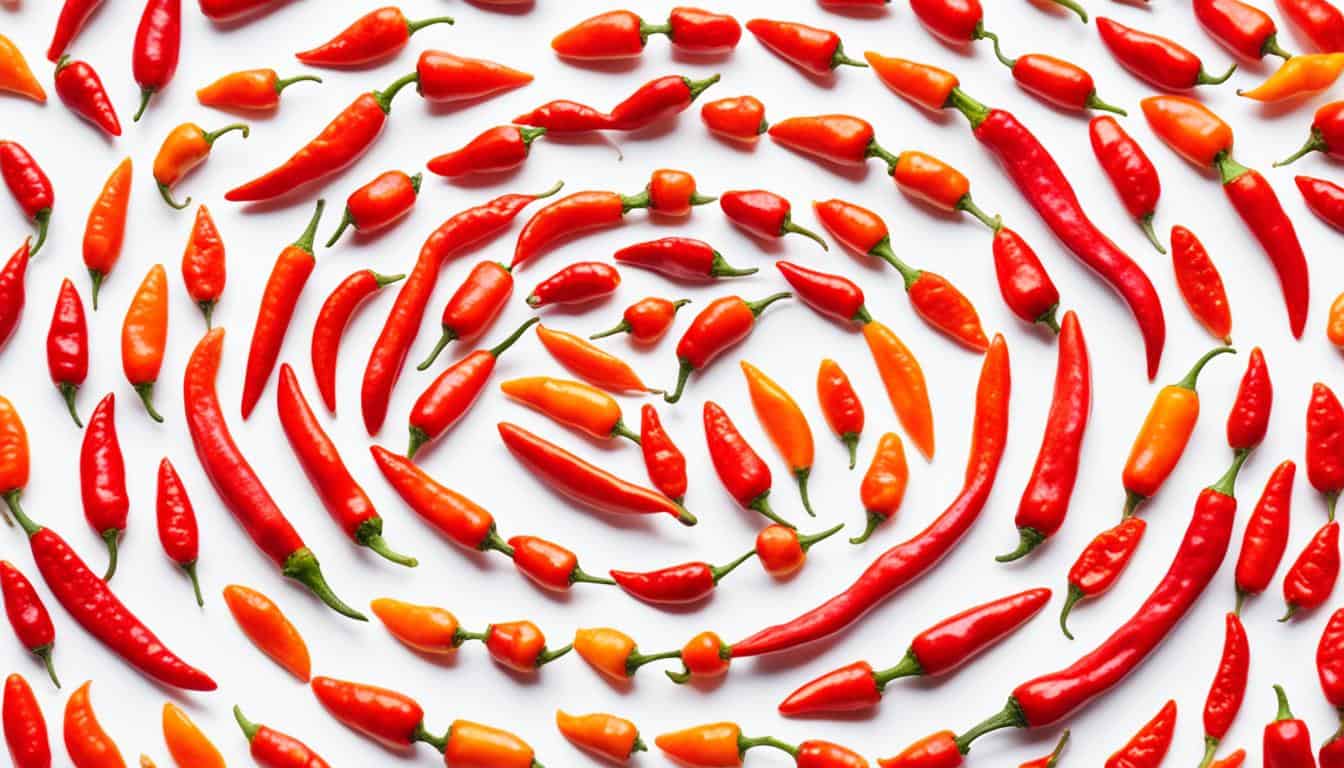
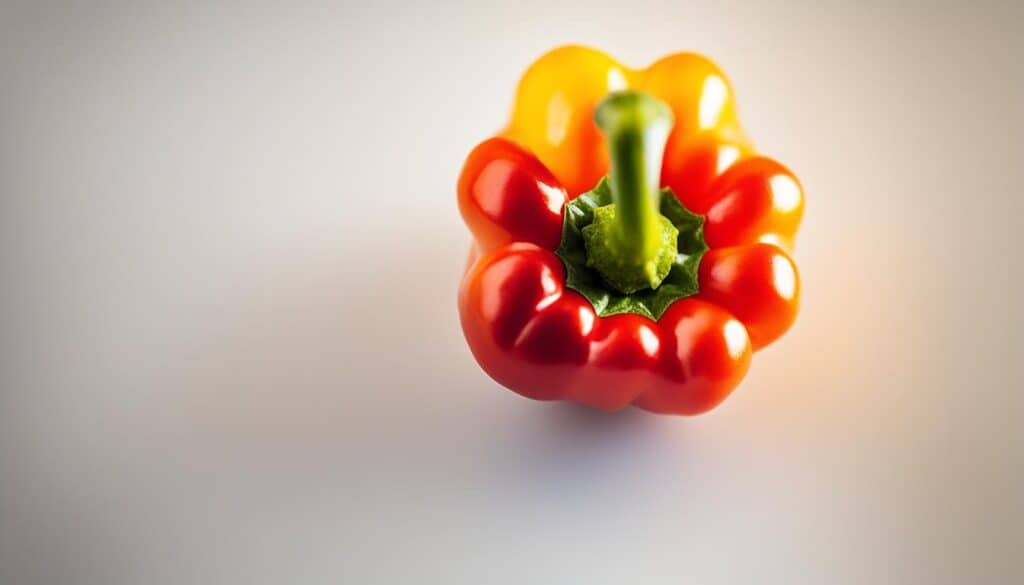
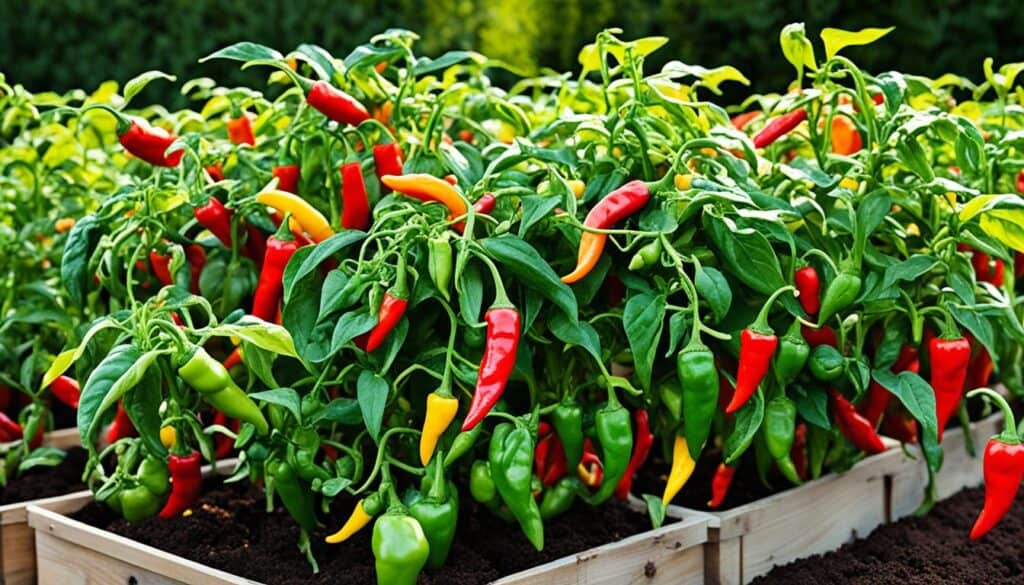
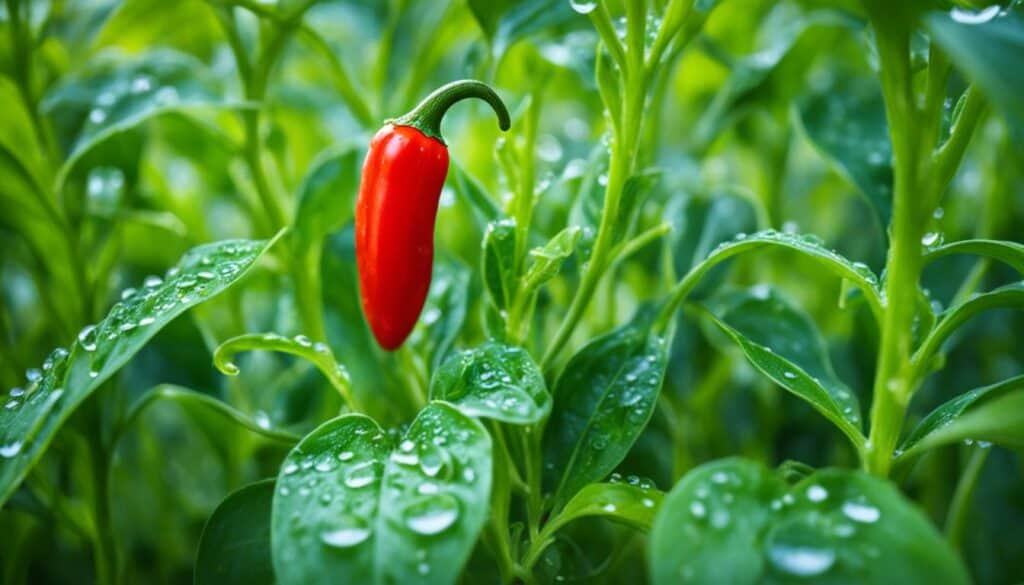
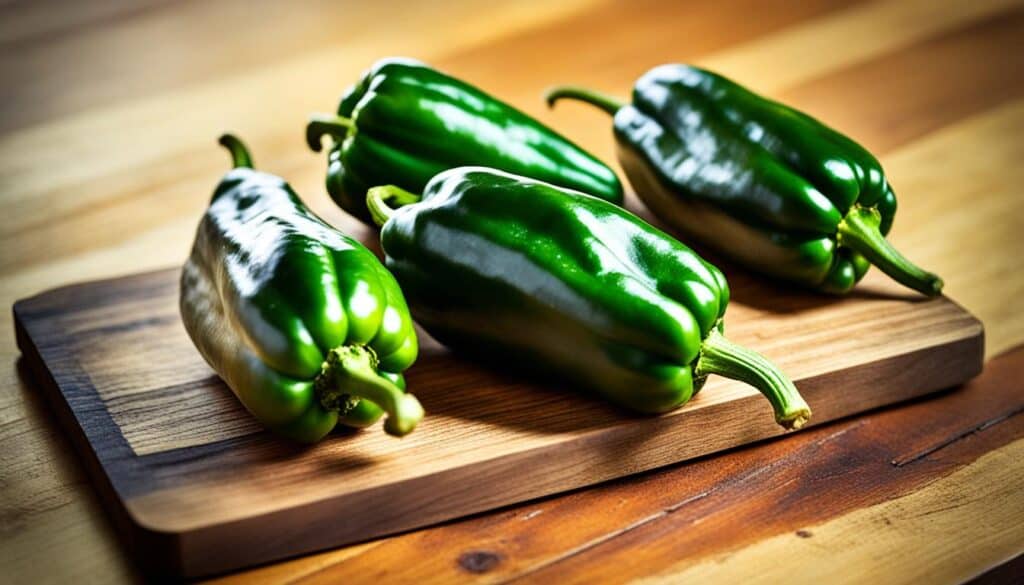
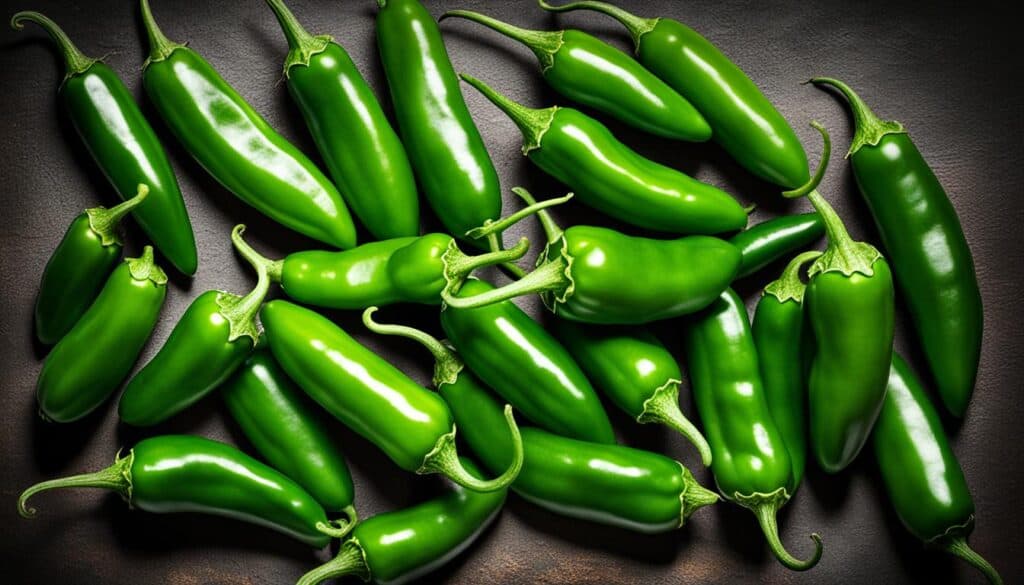



Leave a Reply